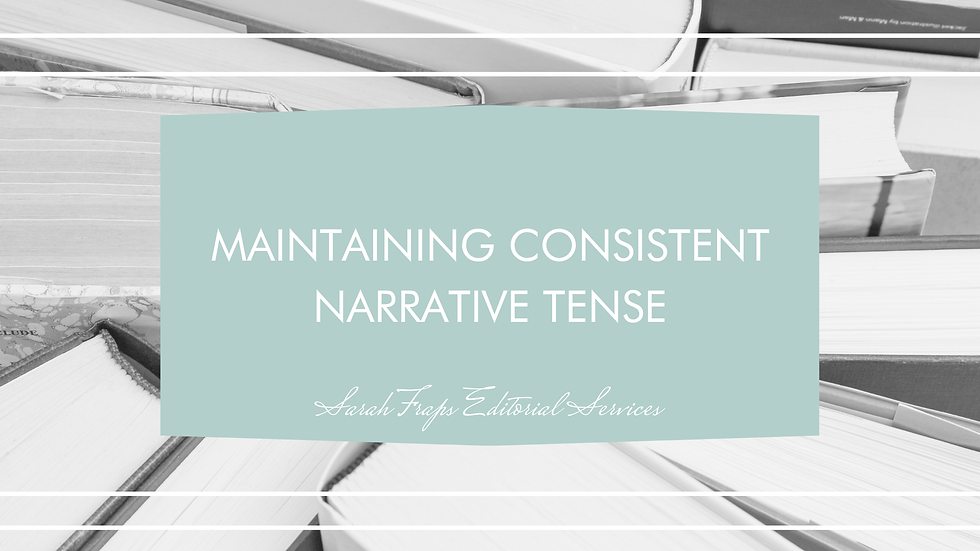What TV and film can teach writers about pacing
- Sarah Fraps

- Oct 17
- 3 min read
You know that moment when you sit down to watch “just one episode,” and suddenly, it’s 2 in the morning? There are many elements in screenwriting that come together to convince you to watch "just one more episode"—cliff-hangers, emotional turns, and perfectly timed reveals. That’s pacing at work—the rhythm of storytelling that keeps audiences hooked.
And here’s the thing: The same techniques that make TV shows and movies addictive can make your writing do the same, convincing readers to read "just one more page."

Scene purpose—every moment counts
In good screenwriting, every scene must move the story forward or reveal something essential about a character. If it doesn't, it’s cut. Writers can apply the same principle to prose. Ask yourself:
Does this scene change something—emotionally, relationally, or narratively?
If I removed it, would the story still make sense?
If the answer is no to the first question and yes to the second, it’s probably filler. Trim it or merge it into another moment.
Episode arcs and chapter rhythm
A great TV episode balances tension and release. It might open with a conflict, escalate toward a midpoint twist, and end on a note that makes you want to hit “Next Episode.”
Chapters work the same way. Think of each one as a mini-episode: It should have a beginning, a middle, and an end that pushes the reader forward. Try ending a chapter with:
A question unanswered/a cliff-hanger
A new piece of information revealed
A decision that changes what happens next
These moments create the tension needed to keep your reader turning the page to the next chapter.
The power of cuts and transitions
Visual media uses cuts to skip dull moments—no one needs to watch a character walk down an entire hallway (this is called "stage direction"). Similarly, good writing skips to the action or emotion that matters.
As you're considering the action within a scene, ask: Can I cut straight to the next moment of consequence without causing confusion or skipping over important details?
Example:
❌ After leaving the restaurant, she drove home, brushed her teeth, and changed into pajamas before checking her phone.
✔️ She left the restaurant, and by the time she checked her phone later that night, his message was waiting.
Montages and summary
When TV shows or films show time passing through a montage, they’re compressing narrative time without boring the viewer. Writers can do the same with summary instead of scene.
If days or weeks pass without major events, summarize briefly instead of writing out every moment. This is where succinct transitions that orient the reader to new scenes can pack a punch.
Emotional beats and energy
Good pacing isn’t all speed—it’s rhythm. Fast, tense moments should be balanced with slower, emotional beats. Without pauses, action scenes lose meaning; without movement, quiet scenes lose tension and impact.
In prose, alternate high-energy scenes that naturally draw readers in with reflection or dialogue that allow readers to catch their breath.
6. Strong opener; strong ending
Think of your story’s pacing like a season of television: A pilot needs to hook viewers, the mid-season should deepen the stakes, and the finale must deliver payoff.
In your manuscript, that means:
Start with motion. Drop readers into a situation or a moment with emotional charge.
End with resonance. Leave readers with a feeling of satisfaction or a lingering question.
TV and film pacing feels effortless because it’s meticulously crafted. Every cut, pause, and reveal is designed to hold attention. Writers can learn from that same discipline: Start where things get interesting, end before they drag, and always move with intention.
If you ever lose your sense of pacing, try this trick: Rewatch a favorite show or movie—not as a fan, but as a storyteller. Notice what elicits emotion and what kind, when you lean forward in anticipation, when you hold your breathe, and most important, when you need “just one more episode.” Then bring that rhythm to the page.








Comments